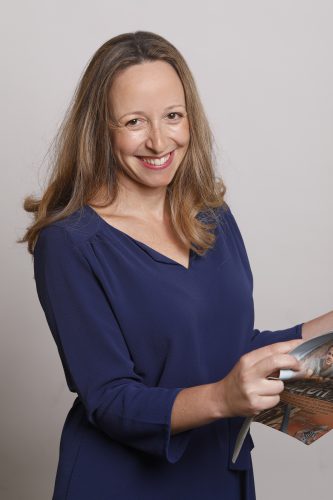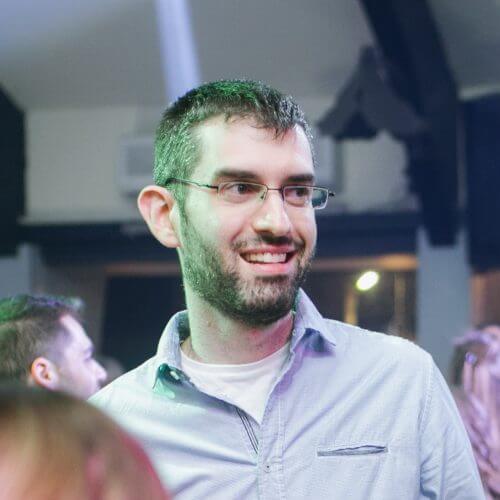Do the search engines give Hebrew, Arabic and English speaking students the same access to quality information? A new study conducted at the Technion and published in the journal Public Understanding of Science answers this question in the negative

We are told that all knowledge is now at our fingertips - just a simple Google search away. But what happens when users search for information in their language, and it is not English? For example, when searching for a term in the field of science, do the search engines give Hebrew, Arabic and English speaking students the same access to quality information? This question is answered - in the negative, if we may be allowed a spoiler - by a new study conducted at the Technion and published in the journal Public Understanding of Science.
In the study it was found that the search results for terms in English are of higher quality than those in Hebrew and Arabic. It was also found that most of the differences between the languages stem from the pedagogical aspects, i.e. the suitability of the content for young users, and not from scientific aspects such as the level of accuracy of the content. Some of the biggest differences between the languages were found in concepts related to nutrition and metabolism, for example "carbohydrate", "protein", "enzyme" and "metabolism".
The findings relate to the first results offered by Google to users from Israel for 30 basic scientific concepts in three languages: Hebrew, Arabic and English. The tested concepts belong to three fields of knowledge: biology, chemistry and physics. For each result, the scientific quality was checked (according to indicators such as the accuracy of the contents, the authority of the author and the sources); the pedagogical quality (for example, the link to everyday life and the nature of the means of illustration); and indicators for the quality of electronic sources (eg up-to-date and interactive).
The research was carried out by Ater Zoevi, Dr. Aviv Sharon and Prof. Eilat Baram-Tsavari from the Faculty of Science and Technology Education at the Technion together with the independent researcher Dr. Eyal Nitsani. Zoevi, who conducted the research as part of her master's studies at the Faculty of Science and Technology Education at the Technion, says that "the findings help us understand the digital divide and the social factors that affect our ability to develop scientific literacy. The degree to which we understand science depends on the environment in which we live and our access to quality scientific information, and research shows that this access depends on the languages we master.

"The scientific and educational communities should work to narrow the gap," adds Prof. Baram-Tsavari, under whose guidance the research was carried out. "We all have a right to access quality scientific information in our language."
for the article in the journal Public Understanding of Science
More of the topic in Hayadan:

4 תגובות
In the archive of the site of knowledge there are more than 23 thousand articles that are based on peer-reviewed studies. Help them be first 🙂
Less of a Google problem, more of a problem that there are no original websites that publish reliable information in this language. Regarding Google - assuming there is a site with the correct information, Google can make a little more effort to pick it up in the results - and take down sites with unreliable information or label them as such.
But it starts with creating original content in the right language. Google doesn't do that.
A. Asbar, is there life outside the earth?
The most obvious sign of humanity is the mistake and the possibility of its correction.
Here is such a story
The failure of mathematics in the geometric field of circles.
A closed circular line drawn with a caliper creates the shape called a circle
The diameter of a circle is a segment of a straight line, which divides the circle into two equal parts. The diameter of the circle is also the diameter of a closed circular line.
MMRTC - an elaborate multi-sided polygon
Dynamic MMR - MMR, whose number of sides changes and always increases.
If we look at a dynamic MRT from a distance, we will see it "as if" it were a closed circular line, but it is really an elaborate multi-sided polygon, each side being a segment of a straight line.
And if we look from a distance at a closed circular line blocking a dynamic MRT, it is likely that no difference will be found, between the length of a closed circular line, and the cumulative length of the sides of the dynamic MRT.
And even though the gaze will not be able to detect a difference, it is necessary to recognize its existence.
To reach this recognition, we will use a famous axiom that states,
"A bow is always longer than its string."
From this famous axiom we derive a new axiom, which corresponds to a closed circular line blocking a dynamic
The length of a closed circular line blocking a dynamic MRT,
(always bigger)
From the cumulative straight length of the sides of the dynamic MRC
But the length difference is very small.
Therefore, the ratio number
The length of a closed circular line divided by the cumulative straight length of the sides of the square is always greater than 1, but it must be very close to 1
But there is another important figure that characterizes this ratio number, and that is its relationship with the actual length of a closed circular line.
If the actual length of a closed circular line approaches infinity mm, this ratio number must be very close to 1, because there is a good convergence between an edge of the MRC and a tiny segment of a closed circular line, which appears to be a straight segment.
On the other hand, if the actual length of a closed circular line approaches zero mm, this ratio number will no longer be very close to 1, because there is no good convergence between the straight side of the square, and a tiny section of a closed circular line whose length approaches zero mm M, which looks very crooked.
In this case the ratio number will move away from 1, and most likely it will approach 1.007
We are talking about an infinity of ratio numbers that are in a narrow range between 1 and 1.007, and each ratio number corresponds to an actual length of a closed circular line, which is between zero mm and infinity mm.
The problem of infinite ratio numbers that are in a narrow range between 1 and 1.007, is beyond the ability of mathematics that has been operating in the geometric field for 2000 years.
Therefore, it should not be surprising that this mathematics ignored the "threatening issue" of an infinite number of ratios located in a narrow domain, and invented instead the belief in a single ratio number, which has nothing to do with the actual length of a closed circular line.
This belief lasted for thousands of years, until it was shattered in 2017 by the scope experiment.
Since the mathematics that operated in the geometric field, is presented and taught as correct beyond any doubt, in schools and universities, it is no wonder that the scope experiment is underestimated, and is dismissed in advance, and does not agree to repeat it.
But the mathematics that operated in the geometric realm failed, and it failed to discover the geometry of closed circular lines.
A. Asbar
21/7/21